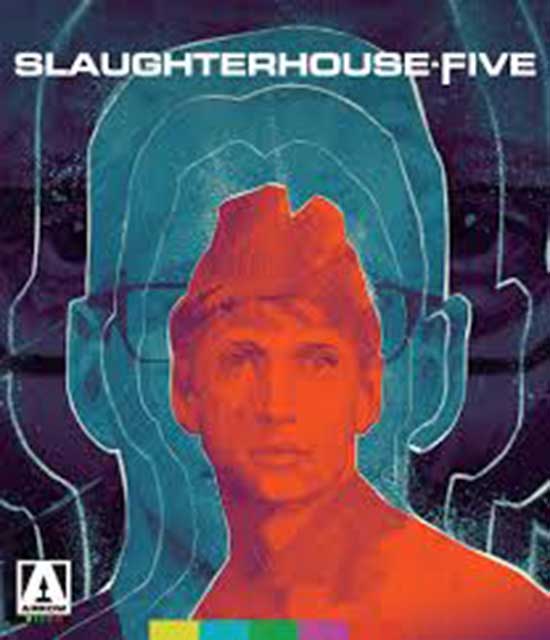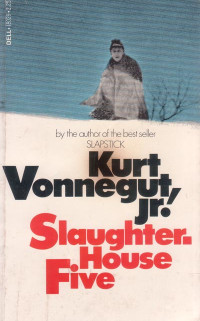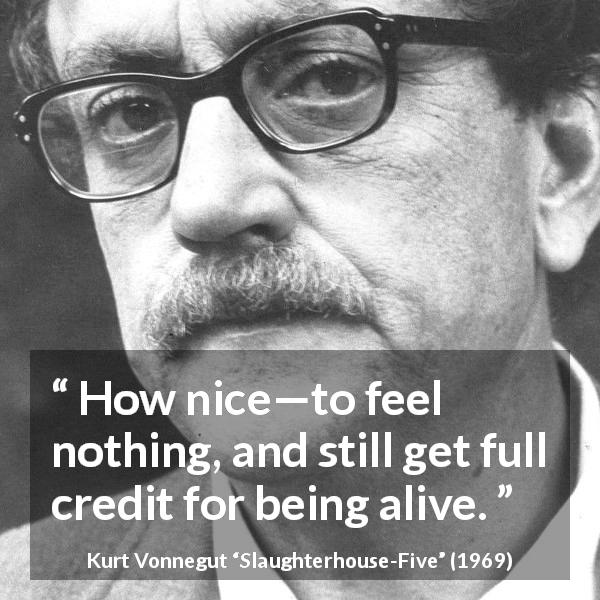Slaughterhouse Five Full Text
- Slaughterhouse Five Full Text Online
- Slaughterhouse Five Pdf Full Text
- Slaughterhouse Five Full Text
- Slaughterhouse Five Chapter 1 Full Text
The world has so many issues to cope with. War is one of the most devastating incidents that occur but if we wish we can change it. The book Slaughterhouse-Five five indicated the devastation of war and why we should be aware of it. Slowly this book will get into your nerves and try to make you an anti-war person.
So stay put and read the complete appraisal of the book. Not to mention we have also included a free pdf for you.
Summary of Slaughterhouse-Five Novel

The book Slaughterhouse-Five is about Bill Pilgrim and time travel. Bill travels back and forth in time and each chapter of the book depicts events about his life. After his birth in New York, he studied at a school. Learn about the military and was sent to Europe for the war. Captured by the Germans, Billy and Americans shipped to a camp full of dying Russians and British. The city boomed and thirteen thousand people died as Billy and his group waited in the Cellar. There they spend without food and water. Someday later the war ended and they were free.
Slaughterhouse Five Full Text Pdf Marvel Puzzle Quest Command Points Hitfilm Mac Torrent Game Psp High Compress Cso. Although Slaughterhouse-Five as a physical space only appears in the novel in a few sections, it is a powerful symbol running through the entire work. It is, ironically, in this slaughterhouse where animals were killed. Kurt Vonnegut Slaughterhouse Five Audiobook Item Preview 1 Slaughterhouse Five by Kurt Vonnegut.pdf. Uplevel BACK 276.2K.
Bill comes back to llium and engaged, become rich. On the night of his marriage, he was kidnapped by aliens. There he was sent to a zoo and met an actress. Both came back to earth exactly the time from where they were taken. Billy went to a radio station and told about the abduction. He also knew how he would die. Bill was murdered by a laser gun at the end.
Review of of Slaughterhouse-Five
Reading War books are like walking through the time of war. And if the book is about time travel and devastation of war, it feels so true to life.
Kurt Vonnegut’s book Slaughterhouse-Five is the first book that depicts the war very straightforward and sideways. The book commencing with a messy gun scene told us so much what is going to be. The beautiful city of Dresden becomes a graveyard of 130000 people in a moment.
The book makes the perfect depiction of war and its devastation. As time travel is included in the story, it also gives us an idea about human cruelty cant be changed through science if we are immoral.
The book has some flaws. This book is not good for young readers as it has so many obscene, immoral, vulgar, and anti-Semitism issues. For any war book lover or fiction lover, this book is fun to read. Slaughterhouse-five is recommended for any time travel enthusiastic.

About the Author
Kurt Vonnegut Junior was an American Author born in 1922 in Manhattan. He was an American Immigrant who came from German in the mid-1900s. Kurt only attended highschool in Shortridge. Then he attended the second world war.
Kurt’s career duration of writing was lengthy. He wrote in the span of 50 years. But not that many books you would expect. Vonnegut published 14 novels, five plays, and non-fiction, three Short stories books.
Among Kurt’s all the books that got published, Cat’s Cradle, Harrison Bergeron, The Sirens of Titan, Mother Night, and Slaughterhouse-Five are the most popular ones. Vonnegut won the Hugo Award for Best Novel and many others.
Detail Information About Slaughterhouse-Five eBook
FAQ:
Why is Slaughterhouse-Five banned?
The book, Slaughterhouse-Five was banned from the Oakland County schools in 1972. The judges of the circuit board have impeached Slaughterhouse-Five as Immoral, psychotic, obscene, anti-religious, subverted. In the next year, a school in Dakota burns 32 copies of the book in a coal burner from the school and reminds the student about its banning.
What is the Theme of Slaughterhouse-Five?
The main motto and theme of the book Slaughterhouse-Five are reminding us of the devastation of wars. In the book, the protagonist Bill, and identities as Paul, Bernard and the writer himself was the victim of physical and mental damage due to the war.

What does the ending of Slaughterhouse-Five mean?
The book Slaughterhouse-Five is a time travel and non-linear story. Due to this, the final scene of the story or the ending is technically not the ending of the story. But the last scene depicts the volatile and emotional ending for the main character. In the scene, the protagonist’s ordeal in the war will construct everything when he goes back to normal life.
Ratings:
Story: 4/5
Engagement: 5/5
Characters: 4.5/5
Writing:4.5/5

Length of the Story:⅘
Creativity: 4.5/5
Overall: 4.2/5

Amazon:4.4/5
Goodreads: 4.1/5
Slaughterhouse-Five is a great book with a strong message. The storyline also feels so smooth and easy flowing so that you will have a great time reading it. We recommend the book to anyone. So here is a bonus for you. Here is an ebook version of Slaughterhouse-Five pdf for free to download.
Before you begin reading the novel
Before undertaking the novel, it makes sense to learn a little about the author. Try this:
- biographical notes at TheFreeDictionary.com: lots of explanatory links to consult as needed
The novel is centered around the time-travel experiences of the protagonist, Billy Pilgrim, who is based on, but not to be taken as identical with, Vonnegut himself. Two intense personal experiences that Vonnegut reworks into Billy Pilgrim's life are his capture by the Germans in the World War IIBattle of the Bulge and his witnessing of thefirebombing of Dresden, where he had been taken as a POW.
You might want to get acquainted with these events before you embark on the novel. The links above are a good place to start. Eventually you may want to learn more.
- You might find interesting Lothar Metzger's eyewitness account of the Dresden firebombing. Some veterans' reactions to the event are featured at the Annenberg/CPB History of World War II site at Learner.org. And, of course, a simple Google search on the word pair Dresden firebombing will turn up lots of material.
- As for the Battle of the Bulge, there is a lot of material on the web if you're interested in learning more. A Google search on the phrase will turn up a host of scholarly and personal accounts. One of the best sites for a beginner would be the one on the film PBS did on the Battle of the Bulge as part of its American Experience Series
Issues to be mindful of as you read the novel
Slaughterhouse Five Full Text Online
(1) Key to the novel is the opening section in which, apparently, the author speaks in his own voice about a visit he made to talk with an old war buddy Barnard V. O'Hare as he was completing the manuscript for the novel. It explains how the novel came to be outfitted with its subtitle ('OrThe Children's Crusade |A Duty-Dance with Death') and how it came to be dedicated to O'Hare's wife. This section makes explicit the author's purpose in writing the novel, as well as his skepticism about whether there is any hope it might contribute to its intended effect.
(2) As you read the novel, be alert for the signs it posts as to what episode the author decides to cast in the role of the climax of the work.
(3) Similarly, you'll want to contrast the way Vonnegut chooses to conclude his novel with the way George Roy Hill chooses to conclude the film.
(4) Here is something that might help to bring these three formal features into thematic focus:
(5) Or consider the prayer Billy has framed on his office wall in his optometry practice. (This is in section 12 of Chapter 3: p. 77 in the Delta trade paperback edition; p. 60 in the Dell mass paperback edition.) Note that it breaks down into 4 parts, which we'll emphasize here by changing the formatting:
|
| (6) A simple but potentially richly suggestive device Vonnegut uses to tie together episodes separated in time and place is motif. You might find it useful to print off a list of important motifs inSlaughterhouse-Five. Keep it on-hand, and use it to jot down page references to episodes where these ideas turn up. What associations and connotations accrete around each? |
| (7) What parallels do you notice between Billy's experiences in Germany and his experiences with the Trafalmadorians? (And how about his experience with learning to swim?) What do these similarities suggest? |
(8)What are the chief features that distinguish Trafalmadorian art from other kinds of verbal art?
|
| (9) When you finish the novel, return to the epigraph between the dedication and the beginning of Chapter 1. What would you imagine to be the frame of mind in which Vonnegut put this passage from a famous Christmas carol here? |
Resources on the novel
There are some quite thoroughbook notes to the novelby Erica Freund at BookRags.com. These may be more elaborate than you need.
- But highly useful in any case is her list ofannotations on objects and places in the novel. This might be worth printing out and having on hand to consult as you make your way through the novel.
Here are some places where you can see other people's reactions to the novel. I strongly advise postponing a look at them until you've read the novel yourself, and formed your own initial impression of it. In any case, before you spend time on these, be sure to see what your classmates are thinking on the course Message Board. And put in some questions, comments, replies of your own.
Slaughterhouse Five Pdf Full Text
- Reader reviews at Popular Hat
- Reader reviews at Amazon.com
- Editorial reviews at Amazon.com
- Reader reviews at Barnes & Noble
Slaughterhouse Five Full Text
Resources on the film
Here are some useful items focusing on the film. Consider whether you might want to experience the film directly first, without knowing exactly what's coming, and then consult one or more of these later, as an aid to collecting your thoughts. (The other approach, of course, is to dispense with suspense and bring a copy of Erlich's study guide, for example, along with you to the showing, for making notes on as the film unwinds. My own view is that the film is quite intelligible -- and besides, you know something of how things jump around, and what the jumping around is between and among, if you've already read the novel, as I hope you will have done.)
- Rick Erlich's study guide to the film
- Patrick Lee's review of the film at Classic Sci-Fi
- Galen Strickland's review of the film at The Templeton Gate (a site devoted to 'the worlds of speculative fiction')
- Richard Scheib's review of the film at his Science Fiction, Horror and Fantasy Film Review site
- Michael P. Rogers' brief review of the film (New York Times: Movies) -- also convenient for list of cast (with links)
Slaughterhouse Five Chapter 1 Full Text
More on Vonnegut
Several excellent starting places are listed in our course page oflinks.
Suggestions are welcome. Please send your comments to lyman@ksu.edu
Contents copyright © 2004 by Lyman A.Baker.
Permission is granted for non-commercial educational use; all other rights reserved.
This page last updated 19 October 2004.